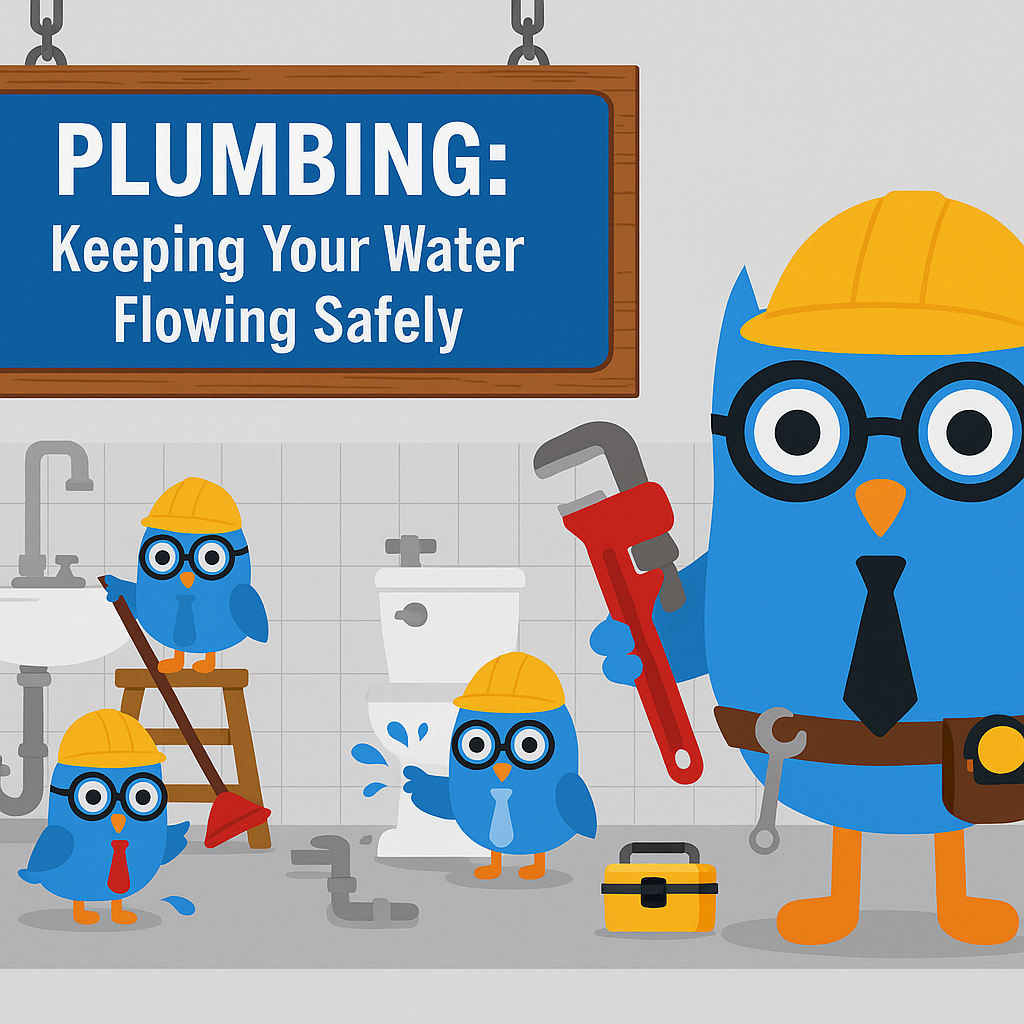Plumbing Insurance: Protection That Keeps Your Business Flowing
Mr. Hoots explains how plumbers can stay covered when the pressure’s on.
Hoo’s there? Mr. Hoots here – and if there’s one thing I’ve learned about plumbing, it’s that when something bursts, it’s never at a convenient time. From pipe repairs to full system installs, plumbing comes with a mix of skill, precision, and risk. Let’s go over the coverage that keeps your business from going down the drain.
What kinds of risks do plumbers face?
- Water damage caused by a leak or line that fails after repair
- Property damage from drilling or cutting through walls and floors
- Injuries from slips, heavy lifting, or confined spaces
- Tool theft from vans or job sites
- Customer disputes when a fix doesn’t hold up or delays cause damage
Core coverage every plumbing business should carry
- General Liability (GL) – covers property damage and bodily injury caused by your work
- Workers’ Comp – protects employees and meets legal requirements in most states
- Tools & Equipment (Inland Marine) – covers portable gear like wrenches, pipe threaders, and drain machines
- Commercial Auto – protects vehicles used to haul parts, tools, and crew
- Errors & Omissions (E&O) – adds coverage for professional mistakes that lead to water or property damage
Common claims in the plumbing industry
- Burst pipes after a repair causing flooding
- Leaks that damage flooring or drywall
- Injuries while working in crawl spaces or on ladders
- Theft of tools or materials from vehicles
- Customer claims for delayed service or faulty installation
Plumbing jobs often involve pressure – literally. When things go wrong, solid coverage keeps you from getting soaked financially.
Contract requirements you’ll see often
Commercial and residential jobs alike may require:
- Certificate of Insurance (COI) listing property owners or GCs as “Additional Insured”
- Proof of Workers’ Comp and Commercial Auto coverage
- Waiver of Subrogation for large projects
- Minimum liability limits of $1M per occurrence and $2M aggregate
Having your documentation in order helps you secure contracts and get paid faster.
Coverage mistakes to avoid
- Assuming your GL covers all water damage – some exclusions apply to long-term leaks
- Forgetting to insure rented or borrowed tools – they aren’t always included
- Not listing subcontractors – uninsured subs can be treated as your payroll during audits
- Using personal auto insurance for work vehicles – it won’t cover business use
Quick safety wins that also help your rate
- Use protective gear when cutting or soldering
- Keep electrical cords and wet areas separated
- Document job-site conditions before and after service
- Secure vans and trailers overnight to prevent theft
Mr. Hoots’ Bottom Line
Plumbers keep the water flowing and the messes contained. Make sure your coverage does the same for your business. Because one broken pipe shouldn’t drain your entire profit.
Protect the work. Protect the wallet. Because when leaks happen, good coverage keeps your business watertight.

